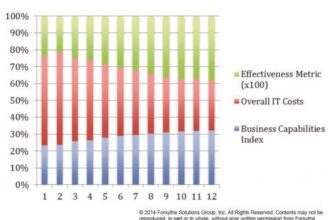Food safety is a very serious concern for every restaurant manager. Contamination or an outbreak can jeopardize the health of their customers, which can threaten your reputation, lead to regulatory fines or even get your business shut down by the state health department. Fortunately, new technology helps restaurants and their suppliers identify these problems, so they can take preventive action.
Recent research from IBM has found that big data, in particular, can significantly minimize these risks. The researchers used retail scanner data to analyze the sources of food outbreaks and the types of products that may be affected.
The IBM study ““From Farm to Fork: How Spatial-Temporal Data can Accelerate Foodborne Illness Investigation in a Global Food Supply Chain”” was published in the Association for Computing Machinery’s Sigspatial Journal. The researchers asserted that their findings will significantly improve food safety. “Rapid identification of contaminated items is vital to minimize illness and loss in an outbreak,” they wrote.
Identify Sources of Disease Outbreaks
The research focused on identifying foodborne illnesses, which can contaminate food supplies throughout a region. Officials can use big data to inform grocery store chains and restaurants, so they know which foods to pull from their inventory until it has been scanned.
“Leveraging retail scanner data with spatial information already collected at any grocery store/supermarket along with the confirmed geocoded cases reported from the public health agency makes it possible to quickly identify a small set of ‘suspect’ products that should be tested in the laboratory and investigated further,” the authors wrote.
Recent food outbreaks may have prompted the research. As of last year, 177 people in the United Kingdom died from mad cow disease. Other outbreaks received less attention, but also claimed many lives.
Improve Restaurant Safety Protocols
While the applications are mainly intended to identify sources of disease outbreaks, the data will be invaluable for improving restaurant management as well. This will set some people’s fears at ease because recent data shows that consumers face many risks eating at restaurants.
Big data can expose many of the risks caused by human error and shed some light on possible solutions. For example, according to one study from EHS-Net, close to 40% of hamburgers requested to be cooked medium rare were not cooked thoroughly enough. If health inspectors rely on big data to keep track of customers and foodborne illnesses, they can pinpoint restaurants that need to improve their operating procedures.
Reduce Cost of Waste
Big data can also help restaurants and grocery stores improve their profit margins. Since the average restaurant has a 4% profit margin, this is a benefit that cannot be overstated.
This wasn’t the focus of the IBM study, but it is another big data application. Waste is one of the biggest costs restaurants have to deal with. They often have to throw out diseased food, even if it doesn’t pose a serious danger to humans because it can spoil quickly.
Big data can help restaurants identify food that is likely to spoil for any reason. This will minimize the amount of money they waste replacing inventory. These costs can add up over time, so it’s important to be proactive.
Restaurants Must Leverage Big Data to Promote Food Safety
Any restaurants that aren’t already using big data to improve food safety should start doing so immediately. They may be unnecessarily endangering their customers and their reputation.
Restaurants should be aware of the different big data solutions on the market and use them to promote food safety. Xpient is one of the many companies that offers restaurant management software.







